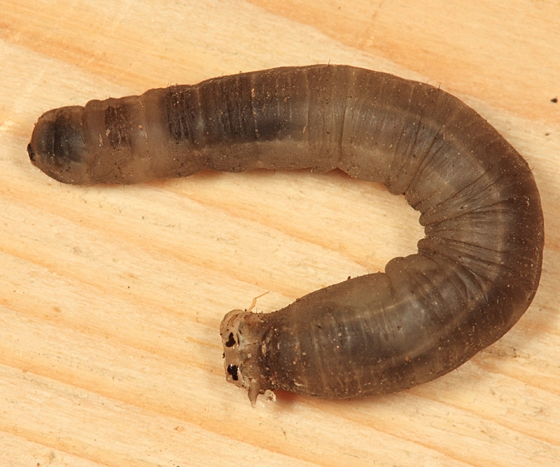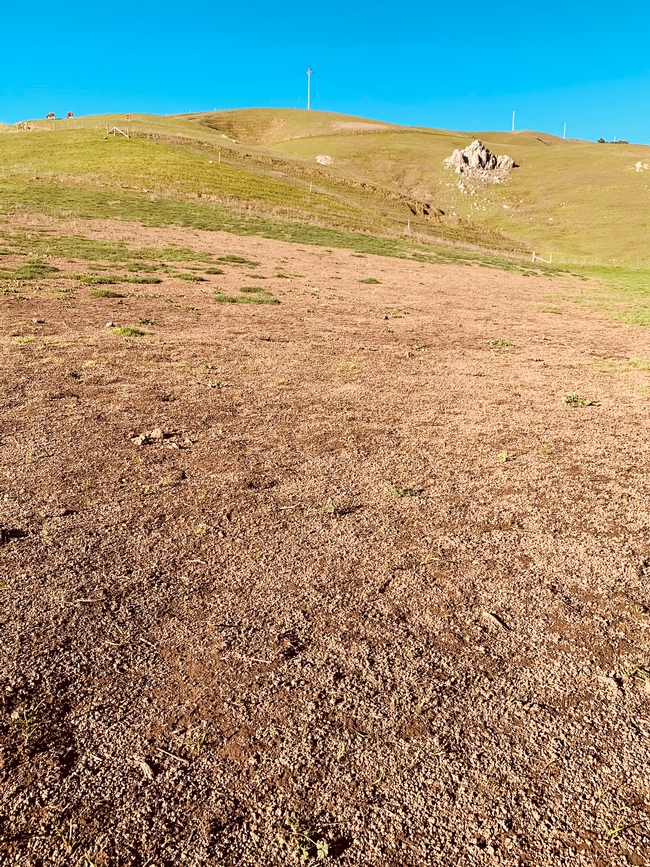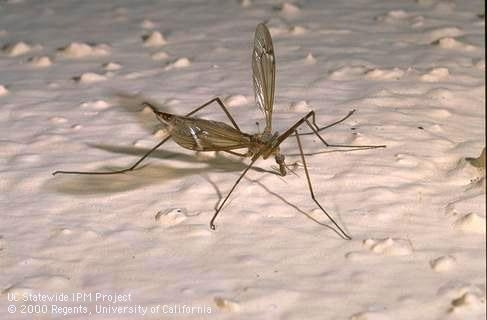Producers experiencing this damage may be eligible for assistance.
Crane flies, Tipula oleracea, are once again present on Sonoma and Marin County's range, pasture and cultivated lands this season. Crane flies, sometimes referred to mosquito hawks, lay their eggs in grass; these eggs hatch into small, brown, wormlike larvae that have very tough skin. Larvae feed on the roots and crowns of clover and grass plant during the fall.
Larvae winter in the soil, and when the weather warms, they resume feeding (and damaging fields).
Larvae are usually killed when a hard frost occurs during the winter season. During this season, we did not experience an adequate frost to kill the larvae; resulting in a large larvae survival. Larvae are now consuming forage at an alarming rate. During the day larvae mostly stay underground but on damp, warm nights they come to the surface to feed above ground parts of many plants. The larvae vary in size, but at maturity are 1 to 1 ½ inches long. Around mid-May, larvae wriggle to the surface and the adults emerge; there is one generation a year. The larvae are the damaging stage of this pest (Figure 1).
As larvae continues to feed on roots, crowns, and above ground portions of plants, damage becomes more noticeable in March and April. The damage appears as large dying patches of grass (Figure 2).
"This is why we need Cooperative Extension; they came out to assess the damage to our silage field and quickly determined the cause of the problem. They provided assistance and support to reduce the impact of our forage losses." Jennifer Beretta, Beretta Family Organic Dairy.
Identify
To determine if these patches are from larvae infestations, dig at the edge of bare ground and grass, 1-2 inches below the surface, to see if larvae are found.
Control
Control options are limited, especially if the land is under organic production. Beneficial nematodes can be spread on the land to reduce the larvae infestations. Unfortunately, this control method results in only 50% control. Organic sprays can also be used, but their efficacy has not be research in our area. Discing bare ground might expose larvae to predators such as birds and predaceous ground beetles and other natural causes.
Bare patches should be reseeded with an annual species, to prevent weed infestations or soil erosion. Producers might consider grazing impacted silage crops, in order to recoup forage losses.
Assistance
Contact the Farm Service Agency, Cecilia Medina, ana.medina@usda.gov, 707-644-8593, on programs for forage losses. The Emergency Livestock Assistance Program (ELAP), is available to producers when forage losses can be attributed to weather up to 180 days per year. Weather is the cause for the infestation of Tipula oleracea infestation. Contact Cecilia as soon as possible; she can assist in filing a notice of loss.
If you need additional assistance, field visit or support letter of loss, please contact me, at 707-565-3442 or slarson@ucanr.edu.
Additional Information
UC IPM Crane Fly Fact Sheet



